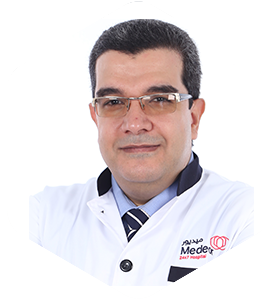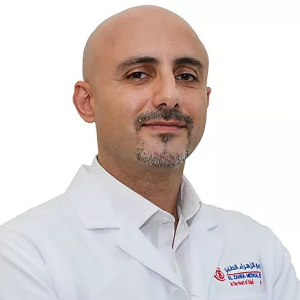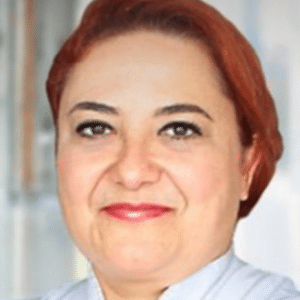WHAT IS MOEBIUS SYNDROME?
Moebius syndrome is a medical condition considered as rarely congenital i.e it is an anomaly from birth that results from incomplete development of facial nerves (7th cranial nerve) in control of movements of the eye and responsible for facial expressions.
The condition also affects the nerves responsible for speech, chewing, and swallowing (6th cranial nerve).
It was first described by Alfred Graefe in 1880 but named after Paul Julius Moebius who reviewed it in 1880 hence the name of the disorder. Symptoms are noticeable at birth. Before other symptoms, the first at birth for children is the inability to suck.
Affected person’s loose expression of their face, that is to say, they cannot smile, frown and raise an eyebrow. They are physically distinct with a small chin, mouth with an unusually shaped tongue, dental abnormally and cleft palate People with this disorder often experience difficulty in making eye contact, looking in the same direction, and completely closing their eyelids when sleeping.
Despite the disorder being associated with a high risk of low IQ, most affected people have normal intelligence and eventually acquire skills. It is not gender-based. Both genders can be affected
A cure is yet to be discovered for Moebius syndrome. However, proper care and optimum treatment can give as many affected individuals a normal life expectancy.
CLASSIFICATION
There was a proposed classification system for Moebius syndrome to study patients with the disorder. The groups include:
- Simple atrophy of cranial nerve
- Primary lesion on the peripheral central nervous system
- Focal necrosis in the brainstem
- Primary myopathy with no central nervous system lesion.
CAUSES
The main cause of Moebius syndrome remains yet unknown but it is taught that the condition results from a combination of some genetic factors as well as environmental factors.
Evidence showed Moebius syndrome can be inherited as an autosomal dominant trait. The abnormal gene can be passed on from either parent or it can be as a result of a mutation in the individual.
In pregnancy, the chances of a transfer are about 50%. Also, during pregnancy, certain medications and drugs abused like cocaine is a risk factor for the disorder. It is speculated that Moebius syndrome can spring from changes in the blood to the brain stem in the early stage of developing an embryo.
Some other theoretical speculations include vascular interruption which involves disrupting the flow in the basilar artery, subclavian artery, and origin of toxins.
DIAGNOSIS
It seems difficult trying to get a diagnosis for a disease that is genetic and rare. It is mostly diagnosed based on the medical records of the patient, symptoms, and what the disease is characterized by. There is no confirmed diagnostic procedure although some tests may be carried out to run out facial palsy.
However, there are differential diagnoses that include some neurologic, degenerative, and metabolic disorders owing to the diverse ways the symptoms manifest and the different cranial nerves affected. Some of the differential diagnoses are :
- Basilar Artery Thrombosis; this results in neurologic impairment associated with bison, loss of movement of the eyes. Other symptoms can be loss of consciousness and a sleepy kind of behavior.
- Brainstem Gliomas; this includes imaging studies of the brain, examining the cerebrospinal fluid. Tumors of the brainstem can cause some striking resemblance to that of Moebius syndrome.
- Congenital Muscular Dystrophy and Congenital Myopathies; are autosomal but recessive and can cause weakness starting at birth. It is simply diagnosed with the help of laboratory tests and imaging studies.
- Myasthenia Gravis; is a rare immune disorder(autoimmune ) that affects the peripheral nerve of the body.
- Focal Muscular Atrophy; this is rather difficult in diagnosing but can cause symptoms resembling that of Moebius syndrome
- Spinal Muscular Atrophy; causes progressive weakness of the parts controlled by lower motor neurons.
- Toxic Neuropathy; on exposure to toxic substances, there can be blurred vision, loss of sensation. This can be diagnosed by a thorough medical history check to remove others’ future exposure, sensory testing, and sympathetic skin reflex.
TREATMENT
The treatment is based on specific anomalies in the individual
Children are kept by a multidisciplinary team in the craniofacial center involving specialists like pediatricians, neurologists, plastic surgeons (specialists in treating ear problems, eye abnormalities), and other health care professionals.
There are corrective procedures for facial paralysis that involve the transfer of muscles from one part of the body to another. It is currently seen in smile surgery as a muscle from the thigh is grafted onto the face to restore smiling, improvement in speech, and self-esteem.
An old procedure called temporalis tendon transfer involved taking the temporalis muscle i.e one muscle for chewing to be transferred to the corners of the mouth. This same mode of operation is used to improve the closure of eyelids.
There is a need for lubrication of the eyes as it helps. Prosthetics may be important for persons with congenital limb abnormalities.
Therapy is also needed; physical therapy which may be beneficial for persons with orthopedic abnormalities, occupational therapy for that anomaly of the hands, fingers, and toes, and speech therapy for the affected children with impaired speech.
Strabismus known as crossed eyes is usually corrected surgically. Also, some operations can be done on skeletal abnormalities affecting limbs and jaws. Procedures are put in place to correct the underdevelopment of the breast and chest.
Counseling (genetic counseling) may be of good use to affected persons and families.
PROGNOSIS
There is no permanent cure for Moebius Syndrome yet there could be complications ranging from dysphagia to corneal abrasion. In cases of the severe brainstem, a compromise that could result in poor nutrition, dysphagia, and inability to protect airways might lead to death at an early age.
Ear deformities may be a risk factor for clinical rounds hence they require meticulous attention and intervention. At birth and infant levels, feeding poses to be a problem just as micrognathia. Death might occur in the perinatal stage due to respiratory problems.
Despite these characteristics of the disorder, proper care and treatment will ascertain many a normal life expectancy.
Symptoms
SYMPTOMS
The symptoms of Moebius syndrome include:
- Difficulty in swallowing and sucking
- The weakness of characterized paralysis on both sides.
- Difficulty with speech and frequent drooling in children
- Lack of facial expression like a smile, frown, raise an eyebrow, closed eyelids
- Cleft palate
- Dental difficulty
- Eye dryness
- Club foot/missing or fused fingers
- Strabismus ( crossed eyes)
- Motor delay
- Hearing disorder
- High palate
- Absence of blinking
- Short tongue
- Keeping head back to swallow
- Hand and feet deformities
FAQ
What is smile surgery?
It is a muscle transfer. It involves taking a muscle from another part of the body (the thigh) and grafting it to the corners of the mouth to give the ability to smile. It is not a cure rather it's a means of restoring the smile. The process is relatively long and time-intensive can last 12hrs for one side of the face.
Is communication possible for individuals with Moebius syndrome?
The situation is very critical for the individuals involved be it children, students, adults. The expression is enhanced using body language and voice toning.
Is this disorder common?
The main causes are yet to be known although it springs from a combination of genetic and environmental factors. Research shows that it affects 2 to 20 person per 1million
How can one know a child with Moebius syndrome?
Recognizable symptoms can tell a child has Moebius syndrome. They include:
- Lack of facial expressions,
- Feeding problem
- Crossed eyes,
- Dental problem,
- Cleft palate,
- Short tongue,
- Speech disorders,
- Hand/feet deformities,
- Absence of blinking,
- Absence of eye movement.
What is Moebius?
It is a rare congenital case that results from underdevelopment of the facial muscle known as the 7th cranial nerve for controlled movements of the eye and the nerves responsible for speech and swallowing knew as the 6th cranial nerve.















































































